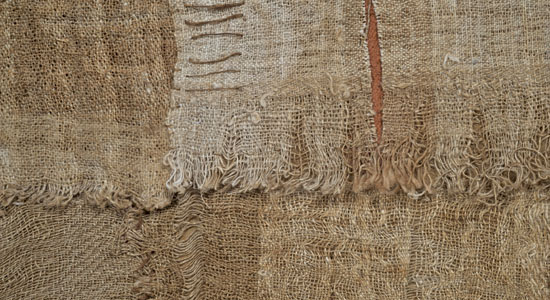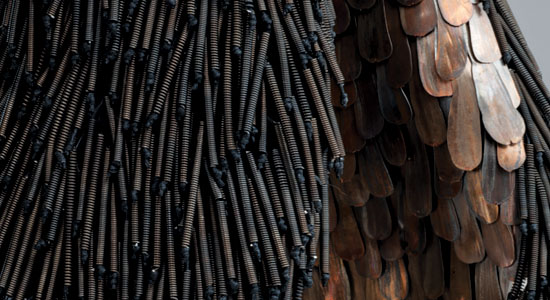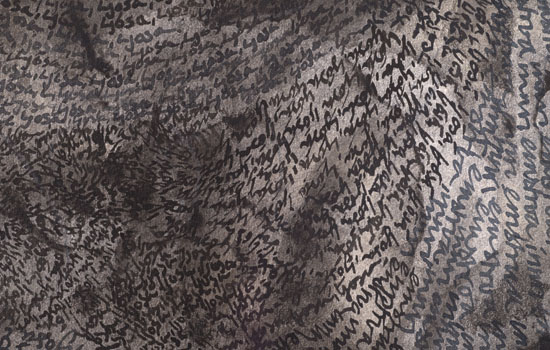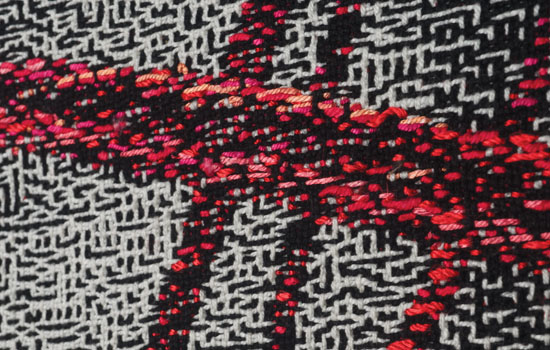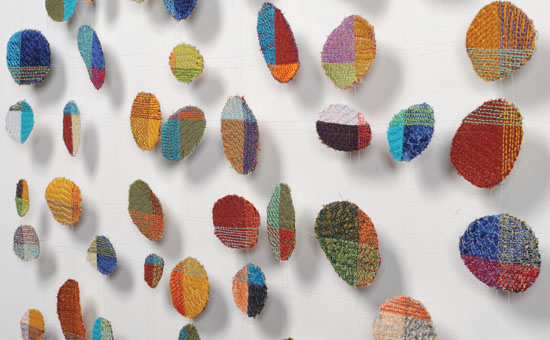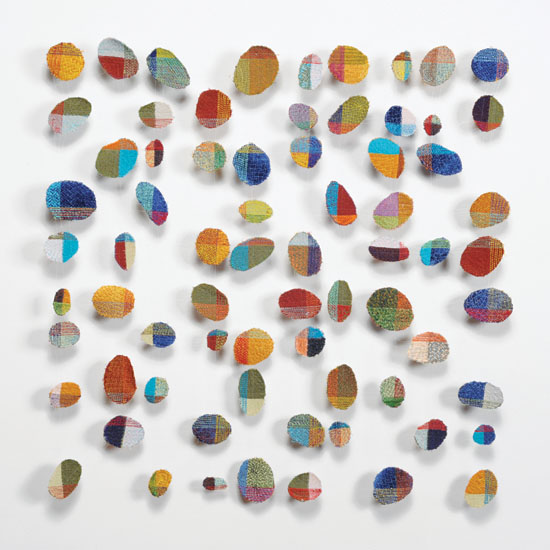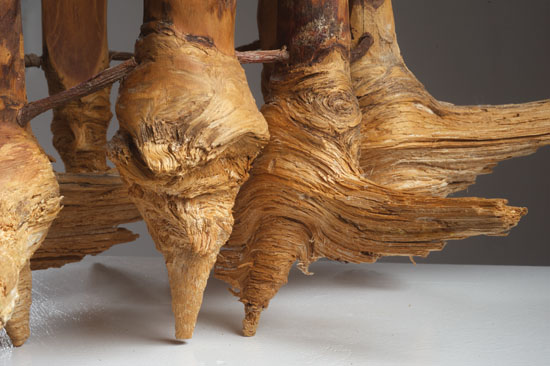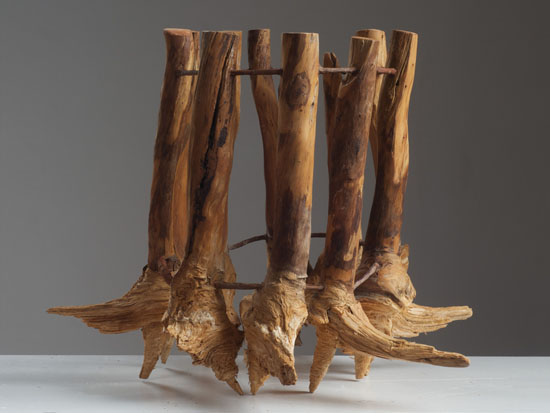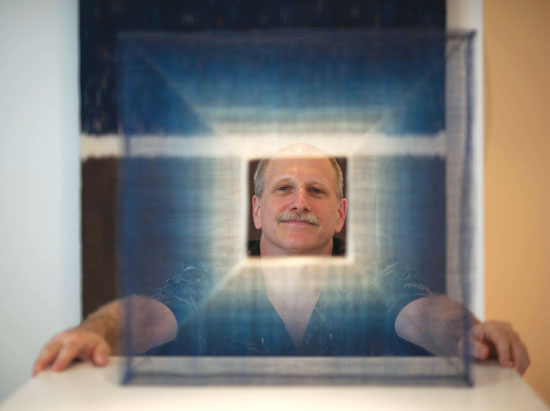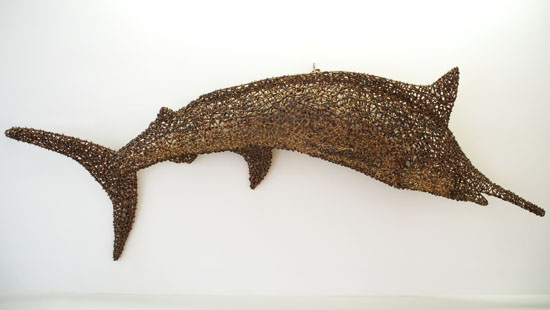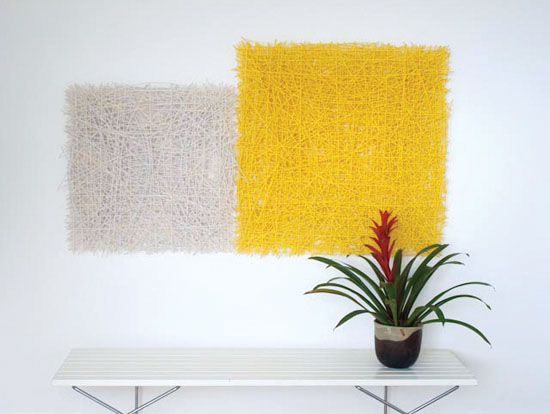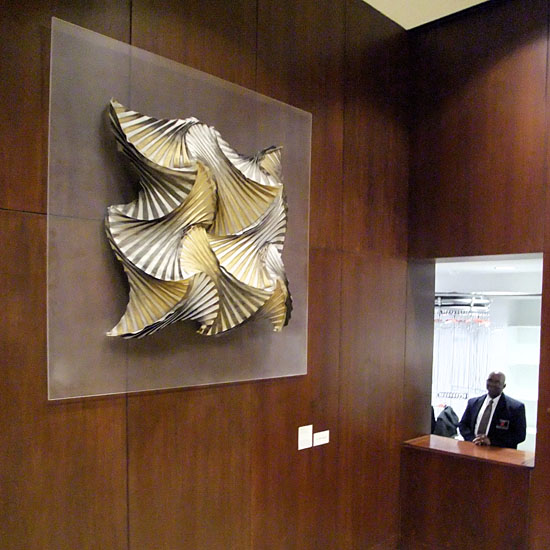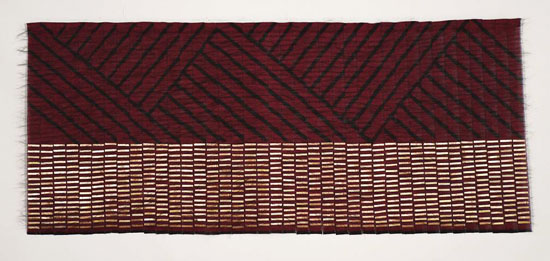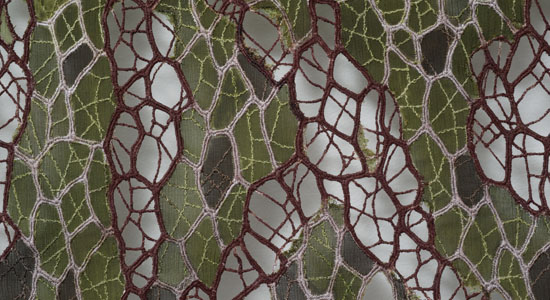
Anda Klancic, Black Grove detail, photo by Tom Grotta
Cerni Goj means the black grove in the ancient Slovenian language, but it is also a surname in Slovenia, the name of the late Slovenian painter and graphic artist, August Cernigoj. At SOFA NY 2012 , browngrotta arts will exhibit Anda Klancic’s work, The Black Grove. The work involved several techniques and manipulations, took 13 years to complete and explores the themes of global linkage and the interaction of humans and nature.
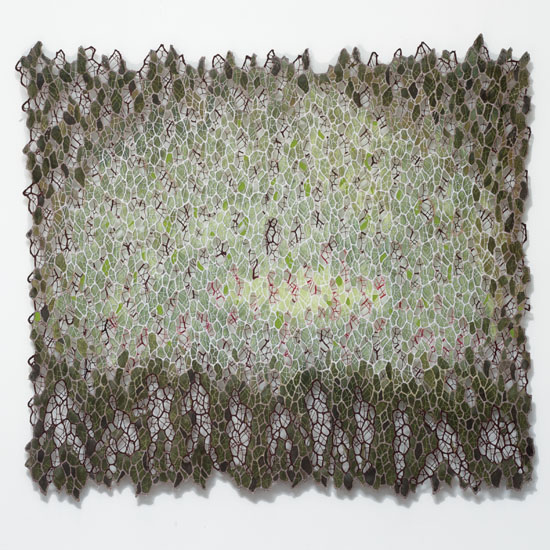 Klancic’s first stimulus for The Black Grove was the structure of the vein-like net of the dried fruit from the plant echynocystis lobata, a wild pumpkin. Inspired by this natural structure, Klancic designed a pattern for industrial machine-embroidered lace and machine-embroidered fabric. From a piece of this embroidered fabric, produced from selected raw materials especially for this hand-manipulated experiment, she produced The Black Grove, using numerous hand-applied techniques.
Klancic’s first stimulus for The Black Grove was the structure of the vein-like net of the dried fruit from the plant echynocystis lobata, a wild pumpkin. Inspired by this natural structure, Klancic designed a pattern for industrial machine-embroidered lace and machine-embroidered fabric. From a piece of this embroidered fabric, produced from selected raw materials especially for this hand-manipulated experiment, she produced The Black Grove, using numerous hand-applied techniques.
Klancic’s work has garnered international acclaim. Her three-dimensional lace work, Foothpaths 2, was commended by the judges at last year’s International Triennial of Tapestry in Poland. Her lighted works Aura and Aura F&M, were presented at the Miniartextil Energheia touring exhibition that opened in Milan, Italy. Aura which is made of palm tree bark, optical fibre, and includes three halogen light sources, is currently in Zagreb, Croatia in the Textil{e}tronic exhibition.

